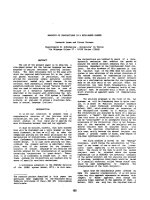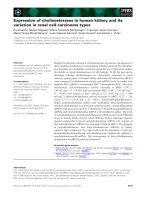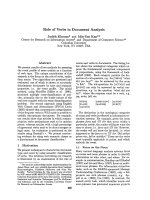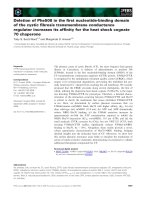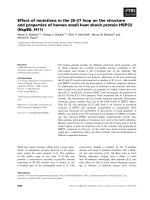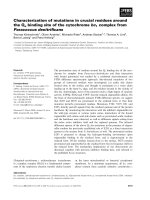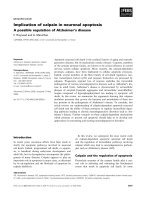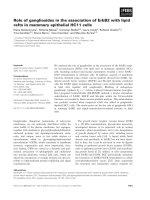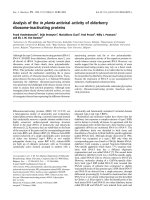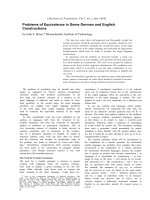Báo cáo khoa học: " Handbook of Drugs in Intensive Care: An A-Z Guide" potx
Bạn đang xem bản rút gọn của tài liệu. Xem và tải ngay bản đầy đủ của tài liệu tại đây (53.5 KB, 1 trang )
Available online />This book does exactly what it says on the cover. It is small
enough to carry, is concise (269 pages), and contains all
essential information on most drugs used in critical care. With
new drugs being introduced and with more patients surviving
with complex co-morbidity, a sound knowledge of pharmaco-
dynamics and kinetics is required, and a quick reference
guide is essential. The third edition of this popular pocket
reference book provides such a reference for doctors, nurses
and pharmacists.
This latest edition follows successful earlier formats with
three sections, the positions of which are sadly not indicated
on the foredge. First, more than 120 drugs are described
alphabetically by nonproprietary name. Concise information
on uses, administration, contraindications, side effects,
cautions, and use during organ failure is provided.
In the second section there is a section of ‘short notes’,
including pharmacokinetics and monitoring, with specific
reference to the critically ill; the management of various
clinical scenarios, such as status epilepticus and hyper-
kalaemia; and the use of antiarrhythmics, inotropes, sedative
drugs and renal replacement. However, some of these short
notes, such as the clinical description of the technique of
pleuradhesis or the management of anaphylaxis, do not seem
to fit into a book concerned primarily with pharmacology, and
we would not have looked for them here if we had wanted an
update. Other short notes are very relevant and helpful, such
as a comparison table of steroid potency, and dose changes
in renal failure, but these are not cross-referenced from the
applicable drugs in the first section, and so they may be
missed by many casual readers.
In the final section there is a selection of charts, including
reference charts for ideal body weight, creatinine clearance
and a comprehensive coloured compatibility chart. Once
again, cross-referencing to some of these charts within the
book would be very helpful.
There have been additions to earlier editions, with the
inclusion of nearly 30 new drugs including terlipressin and
drotrecogin alpha (activated). The compatibility charts have
also been enlarged and printed in colour to aid quick
reference. These changes result in a book that is easy to read
and contains a good balance of information. A notable
absence is information on the mechanism of action of each
drug. This would not only tell us how the drug works but also
how it may produce unwanted effects.
Paw and Park have successfully updated their excellent quick
reference guide, which should continue to aid and inform
doctors, nurses and pharmacists in their daily clinical practice
in intensive care.
Competing interests
The authors declare that they have no competing interests.
Book report
Handbook of Drugs in Intensive Care: An A-Z Guide
James Yassin and Owen Boyd
Intensive Care Unit, Royal Sussex County Hospital, Eastern Road, Brighton, BN2 5BE, UK
Corresponding author: Owen Boyd,
Published: 18 June 2007
Critical Care 2007, 11:309 (doi:10.1186/cc5913)
This article is online at />© 2007 BioMed Central Ltd
Paw HGW, Park GR: Handbook of Drugs in Intensive Care: An A-Z Guide. 3rd edition. New York:
Cambridge University Press; 2006:269pp. ISBN 0-521-68781-0
Page 1 of 1
(page number not for citation purposes)
